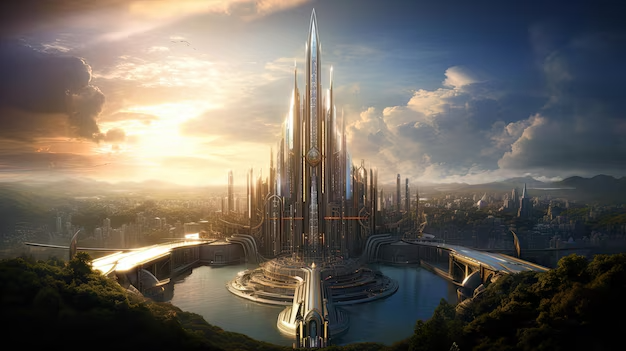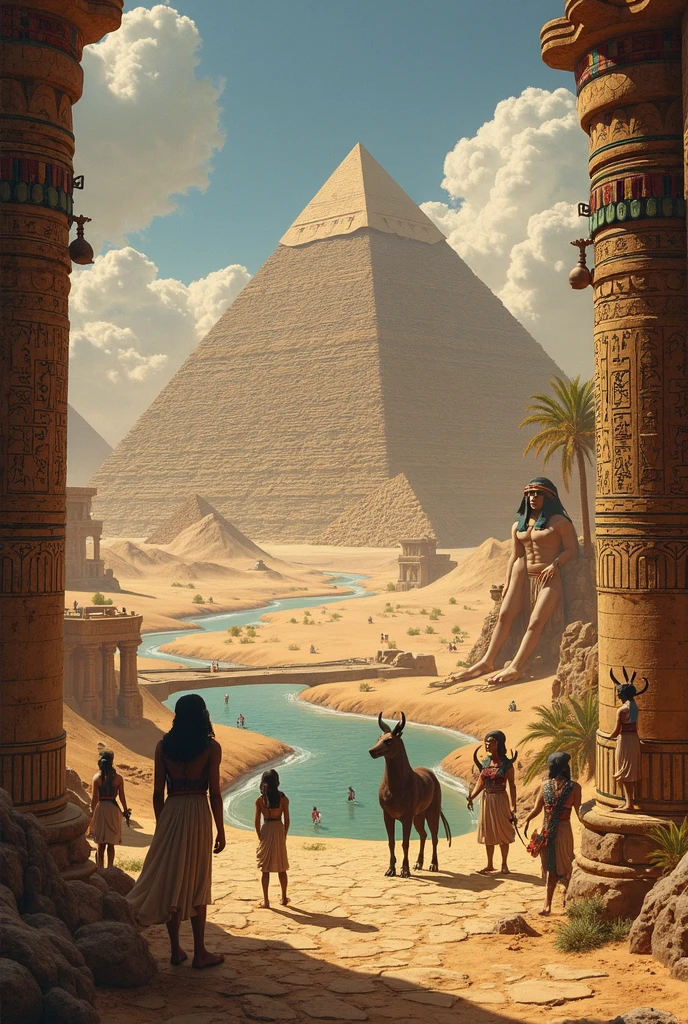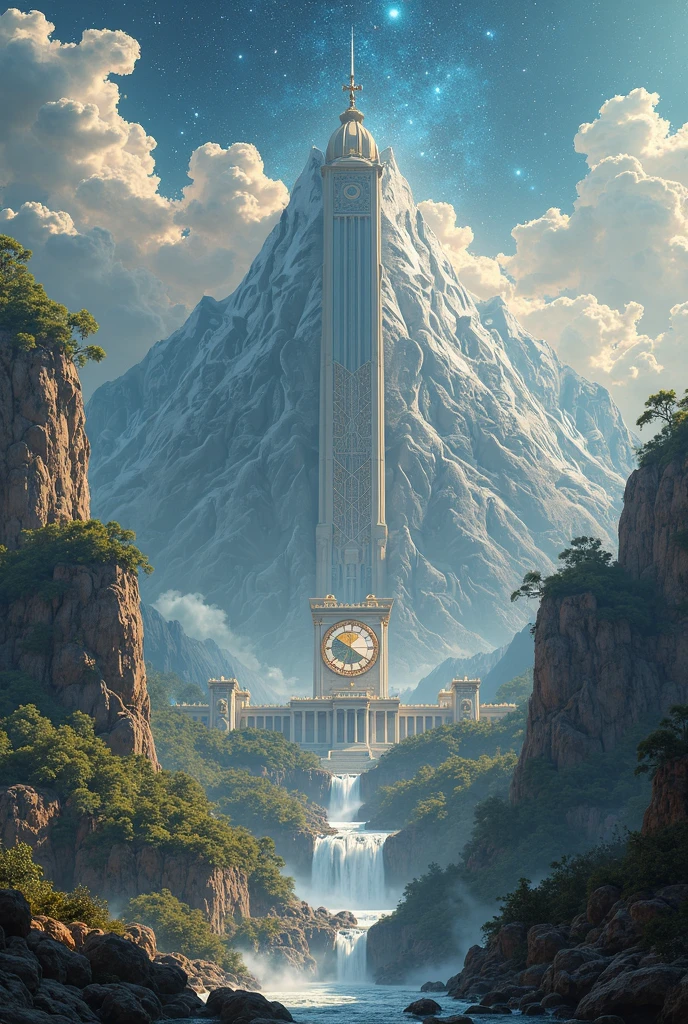Inca Mythology: The Divine Legacy of the Andes
The Inca Empire, centered in Cusco, was one of the most advanced civilizations in pre-Columbian America. At the heart of their culture was a rich mythology that shaped their daily lives, rituals, and governance. Among the most revered deities were Inti, the Sun God, Viracocha, the creator, and Pachamama, the Earth Mother. This article explores their myths, symbolism, and enduring influence.
Inti: The Sun God and Supreme Deity
Inti was the most important god in Inca mythology, symbolizing light, warmth, and prosperity. As the divine ancestor of the Inca rulers, he was worshipped in grand temples like the Coricancha in Cusco. The Inti Raymi festival, still celebrated today, honored him with offerings and dances.
Symbols and Worship of Inti
- Golden Disks: Represented the sun’s brilliance.
- Sacrificial Offerings: Llamas and crops were given to ensure good harvests.
- Temples: The Coricancha was covered in gold to reflect Inti’s power.
| Attribute | Meaning |
|---|---|
| Light | Life and energy |
| Fire | Purification |
| Gold | Divine connection |
Viracocha: The Creator God
Before Inti, Viracocha was the supreme creator who shaped the world. According to myth, he emerged from Lake Titicaca, bringing order to chaos. Though less visibly worshipped than Inti, his influence persisted in Inca cosmology.
Key Myths of Viracocha
- Created the sun, moon, and stars.
- Destroyed a race of giants with a flood.
- Taught humans agriculture and arts.
Pachamama: The Earth Mother
Pachamama, the goddess of fertility and agriculture, was central to daily Inca life. Farmers offered her chicha (corn beer) and coca leaves to bless their crops. Today, she remains a symbol of environmental reverence in Andean cultures.
Rituals Honoring Pachamama
- Pago a la Tierra: Offerings buried in the ground.
- August Celebrations: Month dedicated to her worship.
- Coca Readings: Shamans interpreted her will through leaves.
The Inca Empire’s Sacred Sites
The Incas built monumental sites aligned with their gods. Cusco, the empire’s capital, was designed as a puma-shaped city radiating divine energy. Key locations included:
| Site | Deity | Purpose |
|---|---|---|
| Coricancha | Inti | Sun Temple |
| Sacsayhuamán | Viracocha | Ceremonial Fortress |
| Machu Picchu | Pachamama | Spiritual Sanctuary |
Legacy of Inca Mythology Today
Despite Spanish colonization, Inca myths endure. Festivals like Inti Raymi attract thousands, and Pachamama is invoked in eco-spiritual movements. Scholars study these traditions to understand the Inca Empire’s sophisticated worldview.
For further reading, explore Britannica’s article on Inti, Ancient.eu’s profile of Viracocha, or National Geographic’s piece on Pachamama.
Descubre más historias fascinantes en nuestra web y únete a nuestra comunidad en facebook.com/zatiandrops.
The Celestial Pantheon: Lesser-Known Inca Deities
Beyond the major gods like Inti and Viracocha, the Inca pantheon included numerous deities governing natural forces. Mama Quilla, the Moon Goddess, was Inti’s wife and protector of women. Her silver temples mirrored the Coricancha’s gold, symbolizing the cosmic balance between sun and moon.
Other Notable Deities
- Illapa: God of thunder, wielding a sling to create lightning.
- Ch’aska: Goddess of dawn and Venus, linked to fertility.
- Supay: Ruler of the underworld (Uku Pacha), both feared and respected.
| Deity | Domain | Symbol |
|---|---|---|
| Mama Quilla | Moon, Marriage | Silver Crescent |
| Illapa | Weather | Lightning Bolt |
| Ch’aska | Stars, Love | Morning Star |
The Inca Creation Myth: From Chaos to Order
Inca mythology describes a cyclical universe where Viracocha first emerged from the waters of Lake Titicaca. He sculpted the world in three attempts:
- First Creation: Giants of stone, later destroyed by flood.
- Second Creation: Humans molded from clay, but flawed.
- Third Creation: The Inca people, perfected and guided by divine laws.
The Role of Pachacamac
A lesser-known creator god, Pachacamac, rivaled Viracocha in coastal regions. His oracle near Lima drew pilgrims seeking prophecies. Unlike Viracocha, he was associated with earthquakes, reminding mortals of nature’s unpredictability.
Sacred Animals in Inca Mythology
Animals were seen as divine messengers or manifestations of gods. The condor, representing the upper world (Hanan Pacha), carried prayers to the heavens. Meanwhile, the puma symbolized strength and earthly power, evident in Cusco’s city design.
Key Animal Symbolism
- Serpent: Wisdom and the underworld (Uku Pacha).
- Llama: Sacred to Pachamama, used in sacrifices.
- Hummingbird: Messengers between realms.
Cosmology: The Three Realms
The Inca universe was divided into three interconnected realms:
| Realm | Description | Deities |
|---|---|---|
| Hanan Pacha | Upper world (sky, gods) | Inti, Mama Quilla |
| Kay Pacha | Middle world (earth, humans) | Pachamama, Illapa |
| Uku Pacha | Underworld (death, rebirth) | Supay |
Rituals and Human Sacrifice
While animal offerings were common, the Incas also practiced capacocha, the sacrifice of children during crises. These “chosen ones” (qhapag ñan) were believed to become divine messengers. Frozen mummies like the Llullaillaco Maiden reveal their ceremonial attire and preserved state.
Steps of a Capacocha Ceremony
- Selection of unblemished children.
- Journey to mountain summits (apus).
- Offerings of gold, textiles, and chicha.
- Burial alive or ritual strangulation.
The Inca Calendar: A Sacred Timeline
The Incas tracked time using a lunisolar calendar tied to agriculture and festivals. Each month honored specific deities:
| Month | Festival | Purpose |
|---|---|---|
| December | Capac Raymi | Initiation of nobles |
| June | Inti Raymi | Winter solstice |
| August | Pachamama Raymi | Earth offerings |
Mythological Influence on Inca Engineering
Sacred geometry infused Inca architecture. Temples like Ollantaytambo aligned with solstices, while Moray’s circular terraces mirrored cosmological layers. The Qhapaq Ñan (road system) was believed to follow celestial pathways.
Engineering Marvels Linked to Myths
- Machu Picchu: Aligned with the sun during equinoxes.
- Tipón’s water channels: Tribute to Pachamama’s fertility.
- Pisac’s terraces: Shaped like a condor’s wings.
Spanish Conquest and Syncretism
After colonization, Inca gods were often merged with Catholic saints. Inti became associated with Christ, while Pachamama was linked to the Virgin Mary. This blend survives in Andean festivals like Qoyllur Rit’i, where star worship coexists with Christian imagery.
Surviving Traditions
- Aya Marcay Quilla: Day of the Dead, blending Inca and Catholic rites.
- Chakana Cross: Andean symbol adapted into churches.
- Despacho Ceremonies: Modern offerings to Pachamama.
For deeper insights, visit The Met’s Inca cultural overview, History.com’s Inca Empire timeline, or Smithsonian’s article on Inca resilience.
Descubre más historias fascinantes en nuestra web y únete a nuestra comunidad en facebook.com/zatiandrops.
The Inca Afterlife: Journey to the Stars
Inca beliefs about the afterlife were deeply tied to their cosmology. The soul (nuna) was thought to travel to one of three destinations based on earthly deeds:
- Hanan Pacha: Warriors and nobles joined Inti in the celestial realm.
- Kay Pacha: Commoners remained as protective spirits in the earthly plane.
- Uku Pacha: Wrongdoers faced eternal darkness under Supay’s domain.
Mummification Practices
The Incas preserved their dead through elaborate mummification, believing ancestors could still influence the living. Royal mummies (mallquis) were:
| Practice | Purpose |
|---|---|
| Seated position | Maintained dignity in afterlife |
| Textile wrapping | Symbolized social status |
| Regular “feeding” | Offered chicha and coca leaves |
The Huacas: Sacred Places of Power
Beyond major temples, the Incas revered huacas – natural or man-made objects imbued with spiritual energy. These included:
- Mountain peaks (apus)
- Unusual rock formations
- Springs and caves
- Ancient burial sites
The Ceque System
Cusco’s 41 ceques (imaginary lines) connected huacas in a sacred grid, mapping:
- Political divisions of the empire
- Astronomical alignments
- Water distribution routes
Inca Astrology and Star Lore
The night sky served as both calendar and divine message board. Key constellations included:
| Constellation | Form | Significance |
|---|---|---|
| Urcuchillay | Llama | Protector of animals |
| Mach’acuay | Serpent | Linked to waterways |
| Yutu | Tinamou bird | Harvest predictor |
The Dark Constellations
Unique to Andean astronomy, these were patterns of dark dust clouds in the Milky Way:
- Yacana: A celestial llama whose “urination” brought rain
- Hanp’atu: The toad, associated with fertility
- Mach’acuay: The serpent controlling rivers
Gender in Inca Mythology
Divine duality (yanantin) was fundamental, with gods often having female counterparts:
| Male Deity | Female Counterpart | Domain |
|---|---|---|
| Inti | Mama Quilla | Sun/Moon |
| Illapa | Coya | Thunder/Rain |
| Pachacamac | Pachamama | Creation/Fertility |
The Acllahuasi
The “House of the Chosen Women” trained priestesses (acllas) who:
- Wove sacred textiles for rituals
- Brewed ceremonial chicha
- Could become secondary wives or human sacrifices
The Myth of the Ayar Brothers
This foundation legend explains how the Incas came to rule from Cusco. Four brothers emerged from caves at Pacaritambo, with only Ayar Manco (later Manco Cápac) surviving to found the empire. The others were:
- Ayar Cachi: Turned to stone for his violence
- Ayar Uchu: Became a huaca
- Ayar Auca: Transformed into a bird
Symbolism in the Legend
- Caves represented Pacarina (origin places)
- Golden staff (tapac-yauri) tested fertile land
- Stone transformation showed sacred geography
Inca Prophecies and Omens
Shamans (paqos) interpreted signs through:
| Method | Purpose |
|---|---|
| Coca leaf reading | Divination |
| Animal behavior | Predicting harvests |
| Celestial events | Royal destiny |
The most famous prophecy foretold the empire’s fall when “bearded men” arrived – later interpreted as the Spanish conquistadors.
Mythological Creatures of the Andes
Inca folklore included numerous supernatural beings:
- Amaru: Giant serpent, bridge between worlds
- Ekeko: Prosperity god, today a folk charm
- Chullachaqui: Forest spirit with mismatched feet
- Conopa:
- Stone idols representing crops
- Blessed by priests for fertility
Descubre más historias fascinantes en nuestra web y únete a nuestra comunidad en facebook.com/zatiandrops.
The Language of the Gods: Quechua and Sacred Words
The Quechua language was considered divine by the Incas, with certain words holding magical power. Pachacuti, meaning “world transformation,” was both a royal name and cosmological concept. Key sacred terms included:
| Term | Literal Meaning | Mythological Significance |
|---|---|---|
| Camac | Animating spirit | Divine life force in objects |
| Yachay | Wisdom | Knowledge from Viracocha |
| Ñaupaq | Ancient time | Era of creator gods |
Ritual Speech Patterns
- Harawi: Sacred poetry recited during ceremonies
- Haylli: Victory chants honoring Inti after battles
- Waqay: Lamentations for the dead
The Four Suyus: Mythological Geography
The Inca Empire (Tawantinsuyu) was divided into four quarters, each with mythological associations:
- Chinchaysuyu (North): Linked to gold and the condor
- Antisuyu (East): Realm of jungle spirits and medicinal plants
- Collasuyu (South): Connected to Lake Titicaca’s creation myths
- Cuntisuyu (West): Associated with the ocean and death rituals
Sacred Colors of the Suyus
| Suyu | Color | Symbolic Meaning |
|---|---|---|
| Chinchaysuyu | Yellow | Sun’s power |
| Antisuyu | Green | Forest fertility |
| Collasuyu | Red | Blood of Viracocha |
| Cuntisuyu | Black | Night and ancestors |
Water Deities and Hydraulic Mythology
Beyond Pachamama, the Incas worshipped water spirits called Yakumama (Mother Water). Key water-related myths included:
- Unu Pachakuti: The great flood sent by Viracocha
- Qochamama: Lake goddesses who controlled weather
- Puquios: Sacred springs believed to be tears of the moon
Engineering as Worship
The Incas built 1400 fountain complexes at sites like Tipón, honoring water deities through:
- Ceremonial baths for ritual purification
- Stone channels mimicking serpent shapes
- Moon-shaped pools for Mama Quilla
The Inca Warrior Cult
Military success was tied to divine favor through:
| Practice | Deity Association | Purpose |
|---|---|---|
| War paint | Illapa’s lightning | Divine protection |
| Slingshot use | Viracocha’s weapon | Cosmic connection |
| Trophy heads | Supay’s realm | Spiritual dominance |
The Pururauca Legend
This myth tells how stones transformed into warriors during a crucial battle, establishing:
- The concept of huanca (sacred battle stones)
- Ritual offerings to weapons
- The belief in ancestral battlefield intervention
Mythological Musical Instruments
Sound was sacred in Inca rituals, with instruments believed to channel divine voices:
- Pututu: Conch shell trumpet announcing ceremonies
- Antara: Panpipes mimicking mountain echoes
- Tinya: Drum representing Pachamama’s heartbeat
- Quena: Flute carrying prayers to Hanan Pacha
The Myth of the Singing Stones
Legend says certain huacas would produce musical tones when struck, believed to be:
- Trapped spirits of ancient musicians
- Viracocha’s creation songs made physical
- Warnings from the apus
Inca Timekeeping Myths
The quipu (knotted cords) recorded not just data but sacred chronology:
| Knot Type | Mythological Meaning |
|---|---|
| Figure-eight | Eternal cycles of creation |
| Long knots | Generational passages |
| Color sequences | Celestial events |
The Pacha Concept
Inca time was understood through dualities:
- Ñawpa Pacha (past time) – Age of gods
- Kunan Pacha (present time) – Human era
- Hamuq Pacha(future time) – Prophetic visions
Descubre más historias fascinantes en nuestra web y únete a nuestra comunidad en facebook.com/zatiandrops.
The Inca Agricultural Pantheon
Beyond Pachamama, the Incas worshipped specialized agricultural deities who governed specific crops and farming cycles. These lesser-known gods formed an essential part of daily worship:
| Deity | Crop | Ritual |
|---|---|---|
| Cocomama | Coca | Leaf-chewing ceremonies |
| Saramama | Maize | Seed-blessing dances |
| Axomama | Potatoes | Tuber-shaped offerings |
The Chakra System
Sacred agricultural terraces followed cosmological principles:
- Upper terraces: Dedicated to Inti (sun crops like quinoa)
- Middle terraces: For Pachamama (tubers and maize)
- Lower terraces: Honored Yakumama (water-intensive crops)
Inca Textile Mythology
Woven fabrics (qompi) were considered sacred texts containing:
- Creation stories in geometric patterns
- Astronomical calendars in thread counts
- Genealogical records of noble lineages
The Weavers’ Pantheon
| Deity | Loom Aspect | Symbolism |
|---|---|---|
| Mama Ocllo | Warp threads | Vertical cosmic order |
| Mama Huaco | Weft threads | Horizontal earthly plane |
| Tocapu | Pattern squares | Divine language |
Mountain Spirits and Apu Worship
Each major peak was personified as an Apu (mountain lord) with distinct personalities:
- Salkantay: The “Wild One” demanding llama sacrifices
- Ausangate: Protector of herds, dressed in rainbow colors
- Misti: Volcanic god of purification
Pilgrimage Routes
Sacred journeys to apus followed celestial patterns:
| Route | Alignment | Purpose |
|---|---|---|
| Qhapaq Ñan | Milky Way | Royal initiation |
| Ceque lines | Solstice sunrise | Priestly training |
| Apacheta trails | Star clusters | Commoner devotion |
The Inca Medicine Wheel
Healing practices blended mythology with herbal knowledge through:
- Sonqo (heart) ceremonies balancing cosmic energies
- K’intu coca leaf arrangements diagnosing illnesses
- Enqa amulets containing earth, water, and sacred ash
Curandero’s Toolkit
| Instrument | Material | Divine Connection |
|---|---|---|
| Mesa cloth | Alpaca wool | Pachamama’s fur |
| Khuyas stones | Andean minerals | Apu bones |
| Sanango staff | Chachacomo wood | World tree axis |
Descubre más historias fascinantes en nuestra web y únete a nuestra comunidad en facebook.com/zatiandrops.


